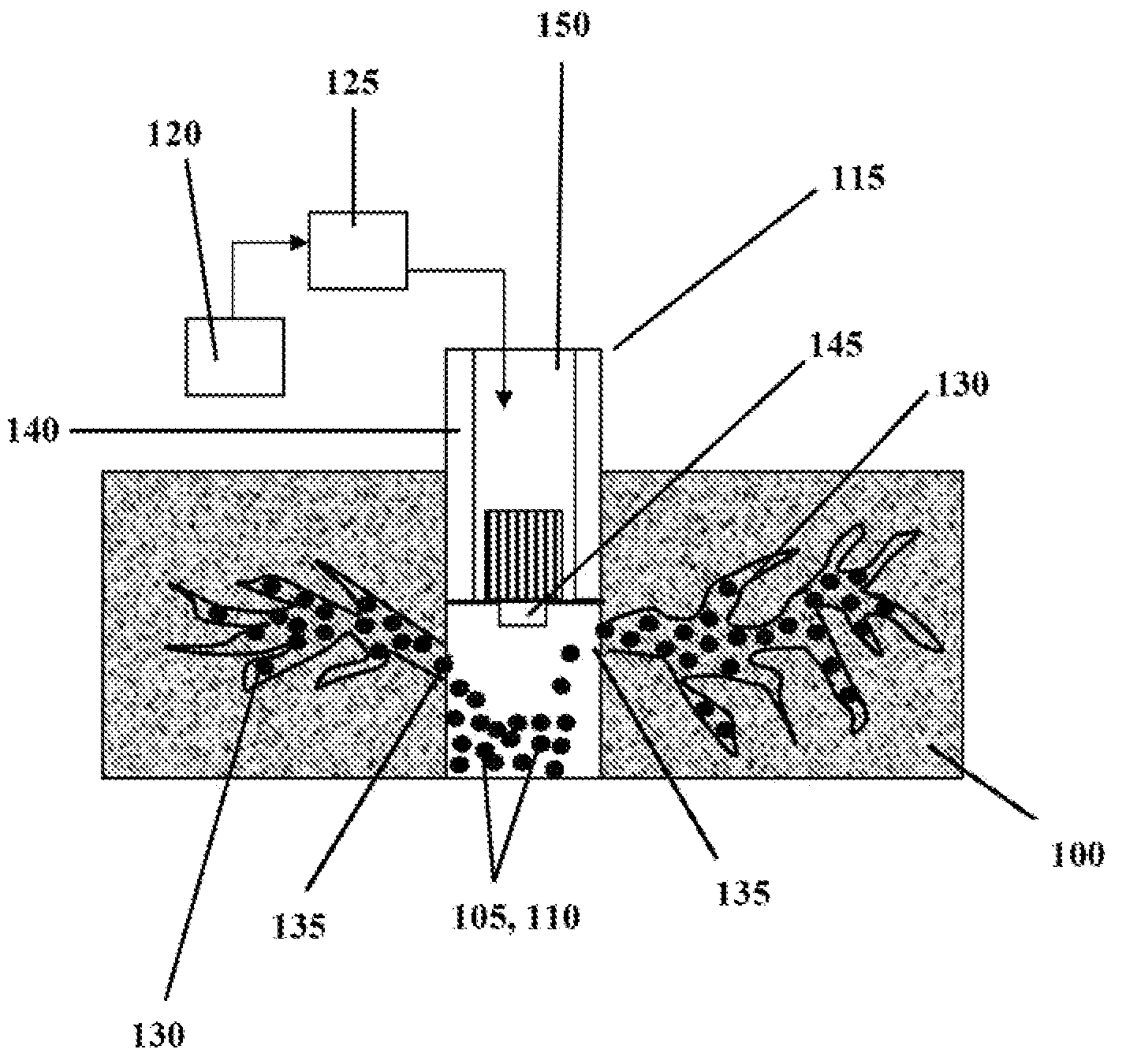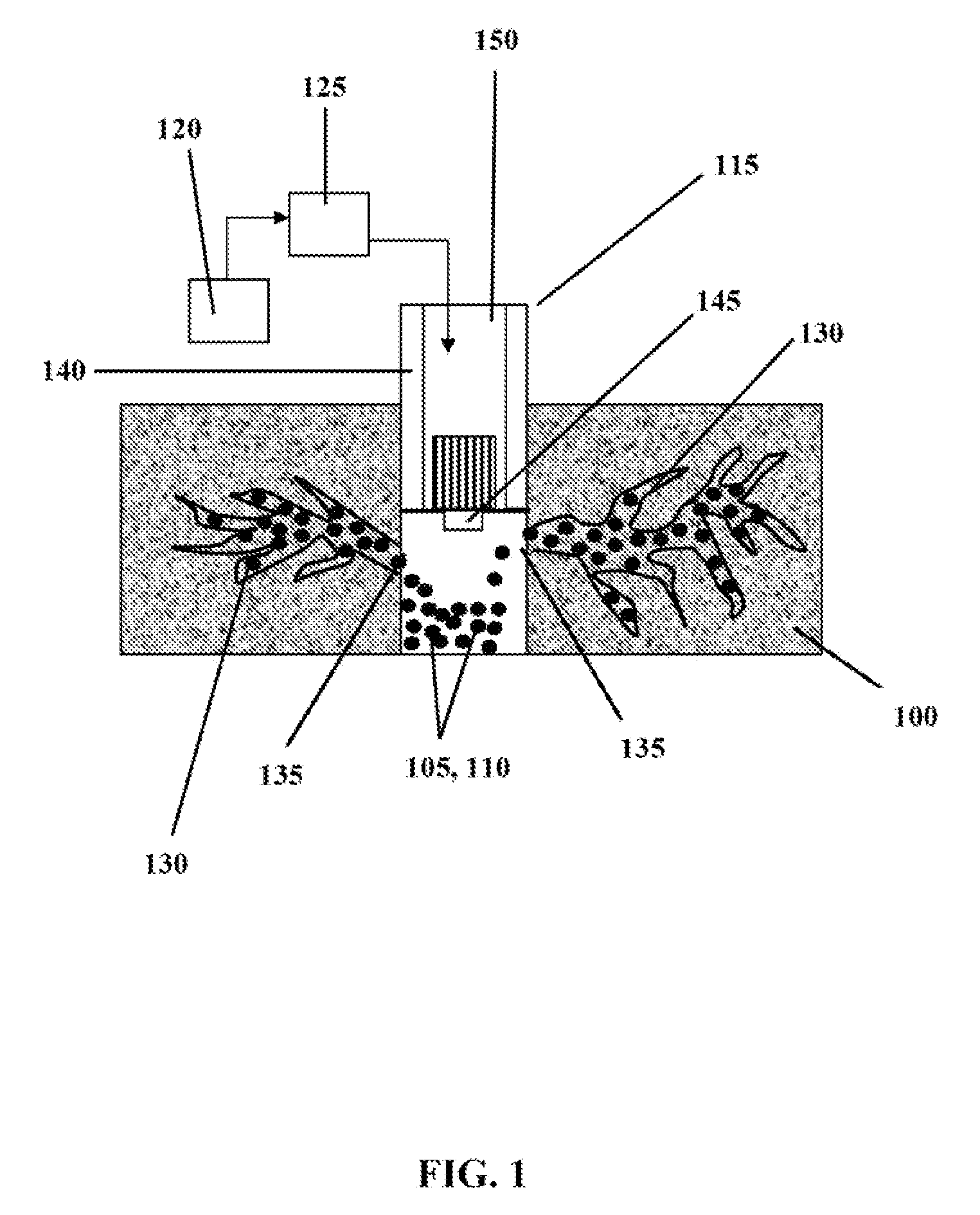Enzyme Surfactant Fluids Used in Non-Gel Hydraulic Fracturing of Oil Wells
a technology of enzyme surfactant and oil well, which is applied in the direction of fluid removal, borehole/well accessories, fluid removal, etc., can solve the problems of hydraulic fracturing being one of the most complex operations in the petroleum (oil and gas) industry, the wells require fracturing, and the vertical fracture is difficult to open, so as to reduce the surface attraction, reduce the oil viscosity, and increase the formation exposure and hydrocarbon recovery range
- Summary
- Abstract
- Description
- Claims
- Application Information
AI Technical Summary
Benefits of technology
Problems solved by technology
Method used
Image
Examples
Embodiment Construction
[0032]Prior art describes use of specific enzymes as breakers for cross-linked polymers in fracturing fluids to degrade the additive compositions generally used in hydraulic fracturing.[0033]The following is a list of key differentiating characteristics defining an enzyme surfactant fluid, including TIGERZYME®, for enzyme surfactant fluid non-gel hydraulic fracturing:[0034]1. The enzyme surfactant fluid does not contain live microbes or require nutrients.[0035]2. The enzyme surfactant fluid does not chemically degrade oil, but can reduce viscosity by catalyzing breakage of Carbon-Nitrogen bonds thru enzymatic activity.[0036]3. The enzyme surfactant fluid used in non-gel hydraulic fracturing is not designed to target cross-linked polymers.
[0037]4. The enzyme surfactant fluid is a combination of enzymes produced by selectively screened oleophilic or “oil-loving” microbes that are combined with surfactants including at least one anionic surfactant.
[0038]5. The enzyme surfactant fluid i...
PUM
| Property | Measurement | Unit |
|---|---|---|
| oleophilic | aaaaa | aaaaa |
| conductivity | aaaaa | aaaaa |
| permeability | aaaaa | aaaaa |
Abstract
Description
Claims
Application Information
 Login to View More
Login to View More - R&D
- Intellectual Property
- Life Sciences
- Materials
- Tech Scout
- Unparalleled Data Quality
- Higher Quality Content
- 60% Fewer Hallucinations
Browse by: Latest US Patents, China's latest patents, Technical Efficacy Thesaurus, Application Domain, Technology Topic, Popular Technical Reports.
© 2025 PatSnap. All rights reserved.Legal|Privacy policy|Modern Slavery Act Transparency Statement|Sitemap|About US| Contact US: help@patsnap.com


